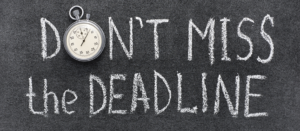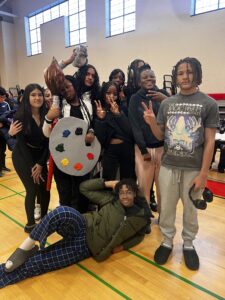Enough is Enough
America’s supposedly red, white, and blue flag has supported no other color but white since the country’s founding. This has been illustrated most recently by this year’s Academy Award nominations, which, once again, failed to represent people of color and other minorities. One year ago, I wrote an article entitled “Earning Equality: Let America Be America Again,” which discussed race issues in America and called for change. Now that more than enough time has passed, has any change occurred? Or is America still treating equality as a privilege as opposed to a natural right? Unfortunately, it appears to be the latter.
In my English class, we are learning about power struggles and institutions. It is a well-known fact that those in power tend to prefer to stay in power, and no one likes being powerless. For countless years, whites were the ultimate beings, bringing down those of other races or cultures in an attempt to secure this power, whether it was Japanese internment, the Trail of Tears, or imperialism. One would assume that in 2016, this power struggle would be long gone, but it is still all too familiar. For example, people of color make up a majority of frequent moviegoers, yet are still unrepresented because of these institutions that continually thrive. The 2016 Oscar nominations contain a plethora of familiar faces, including Eddie Redmayne for The Danish Girl, Jennifer Lawrence for Joy, and Leonardo DiCaprio for The Revenant. However, all twenty faces of the acting nominees do not represent more than one race, as did the nominations last year. Many celebrities, such as Jada Pinkett Smith, Will Smith, Spike Lee, and Michael Moore, have pledged to boycott the Oscars in protest.
“At the Oscars…people of color are always welcomed to give out awards…even entertain,” tweeted Jada Pinkett Smith, “but we are rarely recognized for our artistic accomplishments. Should people of color refrain from participating all together? People can only treat us in the way in which we allow. With much respect in the midst of deep disappointment.” This lack of representation is seen not only in the nominations, but in the movies themselves. “Whitewashing” has become another increasingly concerning issue, with movies last year such as Aloha and Pan coming under fire for their use of white actors for ethnic roles. Because of “whitewashing,” ethnic actors have less opportunities for jobs and, later, nominations. According to the Los Angeles Times, an Asian actress has not won an Oscar in 58 years, and it has been 54 years since a Latina took home the award. No women of color have won in the Best Actress category since Halle Berry’s win in 2002 (which also happened to be the first time in history that a black woman had won said award).
Lupita Nyong’o, one of the few women of color to receive an Academy Award (her’s came in 2013 for Best Supporting Actress for her role in 12 Years a Slave) has blamed “unconscious prejudice” as a potential cause. 94% of the Academy of Motion Picture Arts and Sciences’ (AMPAS) members are white, with only two percent black and less than two percent Latino, according to the Los Angeles Times. They also reported that 77% of AMPAS members are male and the average age of members is 62.
The AMPAS is a prime example of an institution that uses its power to keep those who are different in a diminished role. The Academy’s president, Cheryl Boone Isaacs, has promised to “conduct a review of [the Academy’s] membership recruitment” in an attempt to address the issue for the future.
Since February 2015, we have seen exceptional improvements in the social landscape of the United States, such as the legalization of gay marriage. However, we have also seen the same issues that plague our society repeated over and over. For example, the unnecessary brutality of the police is a prominent problem, with 2015 seeing over 950 deaths as a result according to The Guardian. The police department is also an institution and not a diverse one. According to The New York Times, the percentage of whites on the police force is more than 3o percentage points higher than in the areas they serve. A large majority of the victims of police brutality are people of color, leading myself and others to assume that these attacks are not just random, but a result of intolerant attitudes that are constantly reiterated by institutions in an attempt to concentrate power at the top.
We are nine months away from the presidential election, and one of the Republican frontrunners is business tycoon and reality television star Donald Trump. Although praised for his charisma and blunt demeanor, Trump has been spreading his message of intolerance to the nation, attacking African-Americans, Muslims, Mexicans, Asians, women, and the disabled. And yet, although proving time and time again to be bigoted and prejudiced, he rallies together crowds of thousands, chanting along with him to “Build the wall!” and supporting his narrow-minded and irrational ideology. I find his amount of support to be deeply concerning and an indicator of how far our nation has to go to truly be accepting of all individuals. One issue Trump has been incredibly vocal about is the refugee crisis, declaring proudly that as president, he would refuse to allow refugees to escape war, poverty, hardships, and death by entering America.
“If I win, they’re going back,” Trump said, “They’re going back. We can’t have them.” Although he says he has the welfare and safety of all Americans at heart, his actions seem to be fueled by xenophobia, singling out Muslims and stating that he wants surveillance of certain mosques. This adds to the already heavily skewed and miscalculated view of Muslims as violent or hateful people. Trump represents in all ways the top of America’s hierarchical scale. As a white, rich, real estate mogul, he has been a proud member of the institution for years and is now empowering the institution to new heights with his political support.
February is Black History Month, a time to reflect upon the achievements of prominent African-American figures and the important events in their lives. However, I urge everyone to not only think back, but to think ahead. According to the U.S. Census Bureau, people of color make up 13.2% of the American population; yet, they are singled out and attacked daily. As Dr. Martin Luther King Jr. said, “Injustice anywhere is a threat to justice everywhere.” We need to take action together to create change and truly “make America great again.” We need to be loud, angry, and outspoken. Enough is enough.








